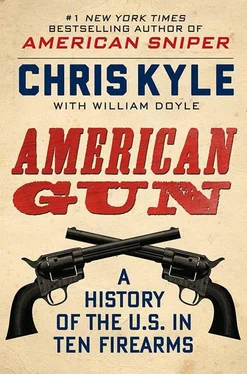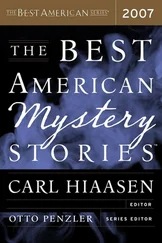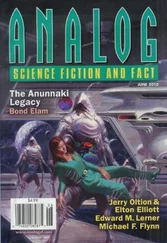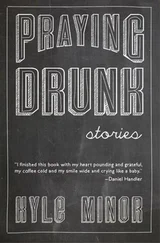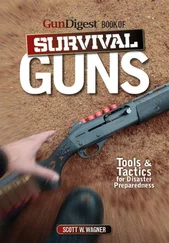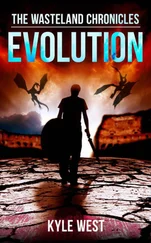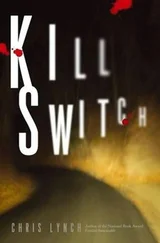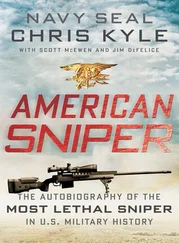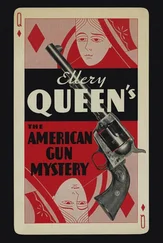The man was Theodore Roosevelt. TR went on to become America’s youngest president and a Nobel Peace Prize winner—as well as a lifetime National Rifle Association member, world-famous big-game hunter, gun collector, and the biggest celebrity endorser that the Winchester firearms brand ever had. “The Winchester,” he wrote, “is by all odds the best weapon I ever had, and I now use it almost exclusively.”
As a hunter out West, Roosevelt liked not only the punch but the utility of the 1876 Model. “It is as handy to carry, whether on foot or on horseback, and comes up to the shoulder as readily as a shotgun,” he declared. “It is absolutely sure, and there is no recoil to jar and disturb the aim, while it carries accurately quite as far as a man can aim with any degree of certainty.” The .40–60 Winchester, he noted, “carries far and straight and hits hard, and is a first-rate weapon for deer and antelope, and can also be used with effect against sheep, elk, and even bear.”
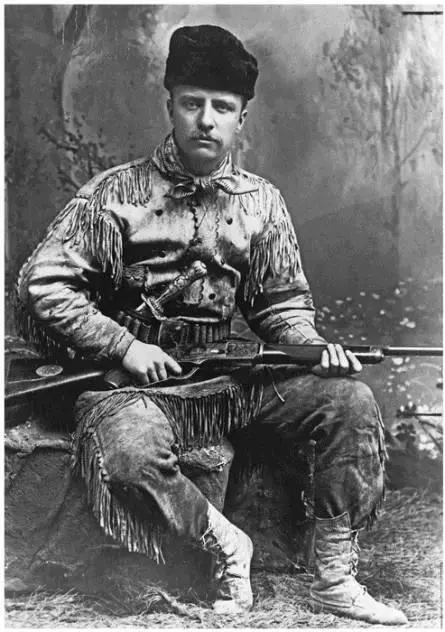
Teddy Roosevelt photographed in 1895 with his favorite gun, a Winchester 1876 Deluxe.
Library of Congress
In the West, Roosevelt found his reason to go on living. Hunting inspired him. He was a cowboy poet when it came to guns. “No one but he who has partaken thereof can understand the keen delight of hunting in lonely lands,” Roosevelt wrote. “For him is the joy of the horse well ridden and the rifle well held; for him the long days of toil and hardship, resolutely endured, and crowned at the end with triumph. In after years there shall come forever to his mind the memory of endless prairies shimmering in the bright sun; of vast snow-clad wastes lying desolate under gray skies; of the melancholy marshes; of the rush of mighty rivers; of the breath of the evergreen forest in summer; of the crooning of ice-armored pines at the touch of the winds of winter; of cataracts roaring between hoary mountain masses; of all the innumerable sights and sounds of the wilderness; of its immensity and mystery; and of the silences that brood in its still depths.”
In a few short years living in the West, Roosevelt became an authentic cowboy-rancher. He tamed bucking broncos, drove a thousand head of cattle on a six-day trail ride, punched out a cowboy in a saloon fight, and faced down Indian warriors. In 1886, with an 1876 Winchester in hand, he tracked and captured three desperadoes in the wilderness and marched them forty miles to face justice.
TR was witnessing the end of the American frontier. By 1890, fewer than a thousand American bison remained. Most of the available land claims had been staked. Countless lives had been claimed by nature, and by man. Yet for many settlers, and for millions more who would follow, the opening of the West offered opportunity and freedom. That frontier spirit is still branded into our national character.
As for Teddy Roosevelt, the West eventually repaired his spirit. He found his bearings again, returned to politics, and started a new family. He worked to clean up the New York City police department, then became an assistant secretary of the Navy. Wanting to see more action, he quit that job when war came, rounding up a group of volunteers to form one of the most famous cavalry units of all time.
And it was in a single hour in 1898, in the thick of combat, when Teddy Roosevelt would discover the key to the White House—while ducking bullets from a gun design that would help shape America into a world power.
5
THE M1903 SPRINGFIELD

“The French told us that they had never seen such marksmanship practiced in the heat of battle.”
—Marine Colonel Albertus Catlin, 1918
“I am the ranking officer here,” yelled Colonel Theodore Roosevelt, “and I give the order to charge!”
It was July 1, 1898. America was a few hours away from becoming a world power.
But it sure didn’t look it. Thousands of American troops were roasting in the hot sun below the hills guarding the eastern approaches to Santiago, Cuba. Palms and the nearby mountains made the place look like a picture postcard paradise. But the whizzing bullets and heat made it feel like hell.
The Americans were bunched up, clogged and trapped by their sheer numbers.
Bullets shredded the tall grass around them. “The situation was desperate,” wrote Richard Harding Davis, a reporter on the scene. “Our troops could not retreat, as the trail for two miles behind them was wedged with men. They could not remain where they were, for they were being shot to pieces. There was only one thing they could do—go forward and take the San Juan hills by assault.”
Roosevelt’s thick glasses fogged in the boiling humidity. He was leading a force of nearly one thousand “Rough Riders,” officially named the First United States Volunteer Cavalry. The handpicked, motley-crew cavalry regiment took Texas Rangers and Western cowboys and mixed them with East Coast Ivy Leaguers, polo players, and tennis stars. Not only were they a varied unit, they were on foot, except for Roosevelt. The rest of the unit’s horses were still back in Florida.
Mounted or not, they’d just be targets if they stayed where they were. But the American infantry officer at the head of the mass formation didn’t want to command his troops to move without orders from his superior. And his unit was in Roosevelt’s way.
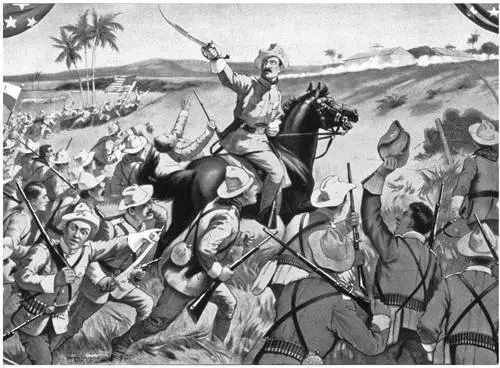
Cuba, 1898: a sensationalized depiction of Teddy Roosevelt leading the Rough Riders up the San Juan Heights.
Library of Congress
Screw that, said TR. Move or get your butt out of the way.
Not in those exact words. But he did pull rank.
“Charge!” barked TR.
Roosevelt galloped around the field cursing and cheering his cavalry forward. The infantry troops around and in front of them realized it was their best option, too. Soon they were all rushing up Kettle Hill.
“The entire command moved forward as coolly as though the buzzing of bullets was the humming of bees,” recalled Lieutenant John J. Pershing, who would lead the American Army in World War I and the years that followed. “White regiments, black regiments, regulars and Rough Riders, representing the young manhood of the North and the South, fought shoulder to shoulder, unmindful of race or color, unmindful of whether commanded by ex-Confederate or not, and mindful of only their common duty as Americans.”
But as the Americans advanced, the gunfire intensified, both on Kettle Hill and the nearby San Juan Heights, where the main American assault was focused. Soldiers dropped in bunches. Not only did the enemy have artillery pieces in position, they had better rifles. Though the Spanish were vastly outnumbered, they commanded the high ground, and had a serious edge in firearms.
The main Spanish infantry rifle, the German-made Spanish Model 1893 Mauser rifle, was a fast-firing, speed-loading, repeating firearm of excellent reliability and smooth, safe, and effective performance. It was close to a masterpiece of a gun. It fired a high-velocity 7 × 57mm full-metal jacket cartridge with a spitzer—or pointed—bullet at its tip. The ammo fed smoothly from an integrated five-round staggered box magazine that could be loaded via stripper clips. The bullets were nicknamed “Spanish Hornets” by American troops who heard the supersonic rounds zipping by their ears. The weapon was so efficient that it served as the starting blueprint for many of the world’s infantry rifles for the next fifty years.
Читать дальше
